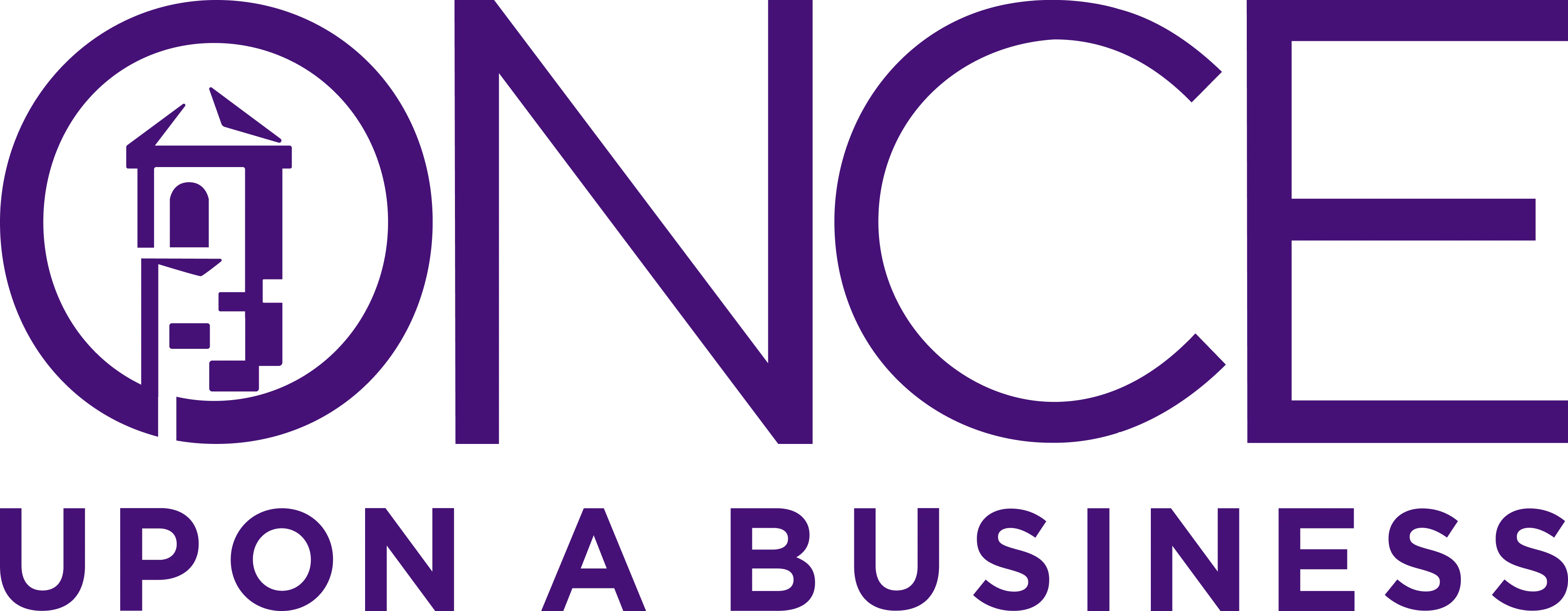
Your client just spent three weeks crafting the "perfect" proposal. Detailed scope, competitive pricing, compelling case studies, professional design. They sent it off confident this would seal the deal. Two days later: "Thanks for the proposal. We're going with someone else who came in 20% lower." Sound familiar? This is what happens when agencies write proposals to convince instead of proposals to close. They create elaborate sales documents for prospects who haven't been properly qualified, then wonder why price becomes the only differentiator.
The solution isn't better proposal templates or more competitive pricing. It's The Fairy Tale Proposal, a framework that assumes the sale has already been made through proper nurturing and simply formalizes the relationship. Instead of trying to persuade hesitant prospects, it prescribes solutions to committed partners. This approach transforms your agency positioning immediately. You're no longer the vendor submitting hopeful bids; you're the strategic partner presenting definitive solutions. The difference between a traditional proposal and a Fairy Tale Proposal is the difference between begging for business and commanding respect for expertise.
Why Most Proposals Fail Before They're Even Opened
Before we architect the solution, we need to understand why conventional proposal thinking creates the problems your clients are experiencing.
The Premature Proposal Problem
What it looks like: Prospects request proposals after minimal engagement. Agencies eagerly comply, spending hours crafting detailed documents for people who haven't demonstrated genuine buying intent or budget authority.
Why it fails: A proposal request isn't a buying signal—it's often a research tool. Prospects use proposals to understand market rates, scope possibilities, or satisfy internal requirements to "get three quotes." Without proper qualification, agencies become free consultants.
The cost: Massive time investment with single-digit close rates. Agencies end up competing on price because they haven't established value through the sales process.
The Everything-Included Trap
What it looks like: Proposals try to address every possible objection, include extensive background information, and demonstrate capabilities through lengthy descriptions. The document becomes a 20-page sales pitch rather than a focused solution.
Why it fails: Lengthy proposals signal desperation and lack of focus. They force prospects to make decisions about elements they haven't requested and create opportunities for objections that wouldn't otherwise exist.
The cost: Decision paralysis for prospects and price shopping for agencies. The more options provided, the easier it becomes to find reasons to say no.
The Negotiation Invitation
What it looks like: Proposals present pricing as ranges, include multiple service tiers, or explicitly invite feedback and modifications. Agencies signal that everything is negotiable.
Why it fails: Flexible pricing undermines expertise positioning. It suggests the agency isn't confident in their recommendations and invites prospects to become the decision-makers about strategic implementation.
The cost: Endless revision cycles, scope creep, and compressed margins. What should be strategic partnerships become adversarial negotiations.
The Fairy Tale Proposal Framework
The Fairy Tale Proposal eliminates these problems by fundamentally changing the purpose and structure of proposal delivery. Instead of trying to convince prospects to buy, it documents solutions for people who have already decided to move forward.
The Foundation: Proper Qualification Before Documentation
Before any proposal is created, prospects must demonstrate:
- Budget Confirmation: Explicit acknowledgment of investment range and decision-making authority
- Problem Recognition: Clear articulation of the specific challenges they need solved
- Solution Alignment: Understanding and agreement with your recommended approach
- Timeline Commitment: Defined start date and project completion expectations
- Internal Buy-In: Confirmation that key stakeholders support moving forward
The Qualification Script:
"Based on our conversation, it sounds like [specific problem] is costing you [quantified impact] and you're looking to implement a solution by [timeline]. The investment for this type of systematic implementation typically ranges from [X to Y]. Does that align with what you had budgeted for solving this issue?"
If any element is missing, the prospect receives additional nurturing, not a proposal. This eliminates tire-kickers and ensures that document creation only happens for genuine opportunities.
The Strategic "No": Setting Boundaries That Command Respect
The most powerful tool in closing high-value deals isn't saying yes to everything, it's knowing exactly when and how to say no. Strategic boundaries demonstrate expertise and create urgency around your recommended approach.
The "No" Framework:
Scope Boundaries:
"Based on the challenges we've identified, the most effective solution includes [specific elements]. While it might be tempting to phase this implementation or reduce scope to hit a lower price point, our experience shows that partial solutions create partial results. We recommend implementing the complete system to ensure you get the outcome you're looking for."
Timeline Boundaries:
"To deliver the results we discussed, this project requires [specific timeline]. While we understand the desire to accelerate, rushing the implementation would compromise the quality and effectiveness of the system. We'd rather decline the engagement than deliver something that won't achieve your goals."
Process Boundaries:
"Our implementation methodology has been refined through [number] successful projects. We've found that deviating from this approach, even with good intentions, typically leads to extended timelines and suboptimal outcomes. We recommend following the proven process rather than customizing it."
Investment Boundaries:
"The investment reflects the comprehensive nature of the solution and the expertise required for successful implementation. We don't compete on price because we're not providing a commodity service. We're architecting a strategic solution that will generate [specific ROI] over [timeframe]."
The Three-Section Structure
Section 1: The Strategic Assessment (The "Why")
This section demonstrates understanding of the prospect's specific situation and positions your solution as the logical response to their challenges.
Components:
- Current State Analysis: Specific problems identified during discovery
- Impact Quantification: Dollar costs of maintaining status quo
- Root Cause Identification: Why previous solutions haven't worked
- Strategic Imperative: Why solving this now is critical for their business
Example Language:
"Our analysis reveals that your current lead management approach is creating three critical bottlenecks: [specific issues]. These gaps are currently costing your business approximately [dollar amount] monthly in lost opportunities. More concerning, they're preventing you from scaling beyond your current revenue ceiling."
Section 2: The Prescribed Solution (The "What")
This section presents your recommended approach as a prescription, not a menu of options. Like a doctor prescribing treatment, you specify exactly what's needed to solve the identified problems.
Components:
- Solution Architecture: Specific systems and processes to be implemented
- Implementation Methodology: Step-by-step approach with timeline
- Success Metrics: Measurable outcomes and tracking methods
- Risk Mitigation: How the approach addresses potential challenges
Example Language:
"To eliminate these bottlenecks and enable systematic scaling, we recommend implementing the [Your Proprietary Framework Name]. This approach includes [specific elements] delivered over [timeline] to ensure sustainable results."
Section 3: The Partnership Terms (The "How")
This section outlines the terms of engagement as a partnership agreement rather than a vendor contract. It assumes mutual commitment and focuses on logistics rather than selling.
Components:
- Investment Structure: Total investment and payment terms
- Role Definitions: What you'll deliver and what they'll provide
- Communication Protocols: How you'll work together
- Success Measures: How progress will be tracked and measured
Example Language:
"The total investment for this systematic implementation is [amount], structured as [payment terms]. This includes [specific deliverables] and [specific support]. Success will be measured by [metrics] with regular progress reviews to ensure alignment."
The "Take It or Leave It" Presentation
The delivery of a Fairy Tale Proposal is fundamentally different from traditional proposal presentations. Instead of selling, you're confirming mutual agreement and addressing final logistics.
The Delivery Framework:
Opening:
"Based on our conversations, I've documented the solution we discussed for [specific problem]. This outlines exactly how we'll work together to achieve [specific outcome] by [timeline]."
Solution Presentation:
"Here's what we'll implement: [walk through solution briefly]. This approach addresses each of the challenges we identified and positions you to achieve [specific results]."
Investment Confirmation:
"As we discussed, the investment is [amount]. This includes everything needed to achieve the outcomes we've outlined. Do you have any questions about the approach or timeline?"
Next Steps:
"Assuming this aligns with your expectations, our next step is [specific action]. We can begin [timeline] and you'll see [initial results] within [timeframe]."
The Strategic Pause:
After presenting the solution, stop talking. Let them respond. Resist the urge to oversell or provide additional justification. Confidence in your prescription is what closes deals.
The Psychology of Strategic Positioning
Why "No" Creates "Yes". Counterintuitively, the willingness to walk away from business that doesn't fit your criteria dramatically increases your close rate on business that does. Here's why:
- Scarcity Creates Value: When prospects understand that your services aren't available to everyone, they perceive higher value and become more committed to securing your partnership.
- Expertise Requires Boundaries: Doctors don't negotiate their treatment recommendations. Neither should strategic consultants. Boundaries signal expertise rather than desperation.
- Qualification Prevents Objections: When prospects have already confirmed budget, timeline, and decision-making authority, there's nothing left to object to except your recommendation—which they helped develop.
- Partnership vs. Vendor Dynamic: Setting clear expectations about how you work positions you as a strategic partner with strong opinions rather than a vendor willing to do anything for money.
Advanced Closing Techniques
The Assumption Close:
"I'll send the agreement this afternoon. When would you like to schedule our kickoff meeting?"
The Scarcity Close:
"We have availability to start this project on [date]. Our next opening after that isn't until [later date]. Which works better for your timeline?"
The Expertise Close:
"Based on what you've told me, this is exactly the type of challenge our methodology solves. I'm confident we can deliver the results you're looking for."
The Partnership Close:
"This sounds like a great fit for both of us. Are you ready to move forward?"
Strategic FAQ: Advanced Closing Questions for Agency Owners
1. "What if the prospect asks for pricing options or wants to negotiate the investment?"
This indicates insufficient qualification before the Closing Document was created. Respond with: "The investment reflects the comprehensive solution needed to achieve the outcomes we discussed. Reducing the scope or investment would compromise the results. Would you like me to explain how each component contributes to the overall success?"
If they continue to negotiate, they weren't properly qualified as ready to move forward. Return them to the nurturing process rather than engage in price discussions.
2. "How do I handle prospects who want to 'think it over' after seeing the Closing Document?"
This also signals premature document creation. A properly qualified prospect has already done their thinking during the sales process. Say: "I'm surprised to hear that. Based on our conversations, I thought you were ready to solve [specific problem] by [timeline]. What additional information do you need to make this decision?"
Often, this reveals unstated concerns or missing stakeholder buy-in that should have been addressed during qualification.
3. "What if they want to start with a smaller project to 'test the waters'?"
Respond with your scope boundaries: "I understand the desire to start small, but our experience shows that [specific problem] requires [comprehensive solution] to be solved effectively. A partial implementation would likely lead to partial results, which wouldn't serve either of us well. We recommend implementing the complete solution to ensure you get the outcome you're looking for."
4. "How do I justify higher prices when competitors are offering similar services for less?"
Price objections in a Strategic Closing Document indicate comparison shopping, which means the prospect wasn't properly educated about your unique approach. Say: "We're not providing the same service as other vendors. We're implementing [your proprietary methodology] to achieve [specific outcomes]. If you're looking for the lowest price, we're probably not the right fit. If you want [specific results], this is exactly what's required."
5. "What happens if they say no to the entire proposal?"
A qualified prospect saying no to a Strategic Closing Document means your solution didn't match their stated priorities, or they weren't actually qualified to move forward. Thank them for their time and return them to your nurturing system.
Remember: a "no" from an unqualified prospect saves you time and effort. It's better to lose an unqualified opportunity quickly than waste months on someone who was never going to buy.
From Vendor to Partner
Here's what most agencies miss about proposal strategy: A proposal isn't a sales document. It's a partnership agreement.
Traditional proposals treat prospects as potential customers who need to be convinced. But qualified prospects don't need convincing, they need solutions. They've already identified their problem, understood your approach, and confirmed their budget. The "proposal" simply documents what you've already agreed to do together.
The Fairy Tale Proposal recognizes that modern B2B buying is fundamentally about risk mitigation and expertise validation. Prospects aren't looking for the cheapest option; they're looking for the most confident solution to their specific problem.
When your document assumes partnership rather than pleading for consideration, several things happen:
- Decision-making accelerates instead of stagnating. There's nothing to deliberate because all decisions were made during the qualification process. The document simply confirms next steps.
- Price becomes secondary to solution fit. Qualified prospects focus on outcomes rather than costs because they've already confirmed budget alignment.
- Negotiations become unnecessary. When you prescribe solutions confidently and set clear boundaries, there's nothing left to negotiate except start dates.
- Relationships begin as partnerships rather than vendor arrangements. The tone established in your Fairy Tale Proposal carries through the entire engagement.
- This isn't just better proposal writing. It's the difference between competing for business and being selected for expertise.
- Strategy without systems is a fairy tale. But systematic qualification paired with confident prescription? That's how agencies transform from order-takers into strategic partners.
Stop Competing, Start Prescribing
You have a choice. You can continue being the agency that submits competitive proposals, or you can become the strategic partner who prescribes solutions to qualified opportunities.
The Strategic Closing Document framework gives you proprietary methodology that immediately elevates every prospect interaction. When competitors are sending 20-page proposals hoping to win on features, you're presenting focused prescriptions that assume partnership.
When they're negotiating on price, you're setting boundaries that command respect. When they're chasing unqualified leads, you're closing committed prospects with confidence.
Your clients don't need another vendor willing to bid on anything. They need a strategic partner confident enough to prescribe solutions and strong enough to walk away from poor-fit opportunities.
The Strategic Closing Document is that confidence, systematized and repeatable. Every qualified prospect becomes a partnership opportunity rather than a competitive situation.
Stop hoping your proposals will win. Start prescribing solutions that close.

Discover Your Happily Ever After
Subscribe to get weekly updates on how you can start handling departmental plot holes in your story!







